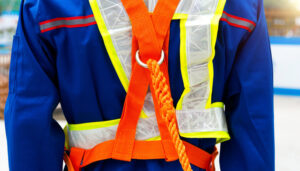New Advances in Helicopter Landing Technology May Change the Shape of Pilot Training
With the development of new technologies, helicopter pilot training may soon be taking a step into the future. Auto landing is an automated system developed specifically for helicopters which makes it possible to input flight data details and have the aircraft autonomously land itself without assistance from human operators. This revolutionary technology stands to revolutionize helicopter pilot education and vastly improve safety standards in aviation by reducing potential human error.
Skyryse has developed a groundbreaking technology that automates autorotation, capturing attention in the aviation industry. This innovative system, known as FlightOS, goes beyond helicopters and Autoland systems, offering a highly automated flight control solution for various aircraft, including planes, helicopters, and eVTOLs.
Using a modified Robinson R66 helicopter as a demonstration platform, the Californian-based company has successfully executed numerous automated autorotation landings since July 2023. The first production model of the modified R66 is scheduled for release in 2024, marking a significant milestone in the field.
So, how does it work? When an engine failure is detected, the FlightOS system automatically initiates the autorotation procedure. And for the pilot’s role? It’s as simple as pressing a single button. This button lowers the pitch, aligns the nose, ensures stability, and completes the flare, resulting in a smooth landing for the helicopter and a safe outcome for everyone involved.

Manual Landing
As we know, no two landings are alike and not all landings occur in ideal situations. It is that no matter how much technology advances we stay up to date on how to manually land the aircraft. As with any profession, the more skilled a pilot is, the better they can perform their duties. Below are general guidelines for landing; follow the guidelines and procedures for your specific aircraft.
- Prepare for Descent: First, check your instruments and surroundings to ensure it’s safe to begin your descent. Make sure there are no obstacles in your path.
- Begin Descent: Slowly decrease the collective control (the lever on your left), which reduces the main rotor’s pitch angle and starts the descent. Simultaneously, gently push the cyclic control (the stick in front of you) forward to maintain forward speed.
- Control Your Speed: As you descend, keep an eye on your airspeed. It’s crucial to keep the helicopter moving forward at a safe speed and not let it get too slow.
- Check Altitude and Position: Continually check your altitude and position relative to the landing spot. You want to aim for a steady, gradual descent that brings you right to your landing point.
- Final Descent: When you’re about 20-30 feet above the ground, slowly pull back on the cyclic to reduce your forward speed. This is called the “flare”.
- Touchdown: Once the helicopter is almost stationary and a few feet off the ground, slowly lower the collective to decrease lift and let the helicopter settle gently onto the ground. Keep the helicopter level with the cyclic.
- After Landing Checks: Once on the ground, complete your after landing checks. This includes reducing the throttle to idle, ensuring the rotor blades have stopped spinning before exiting, and securing the helicopter.
While aspiring helicopter pilots will still need to master the manual autorotation technique during their training, any advancements in safety are certainly welcome news. The anticipation for what lies ahead in this field is palpable.
RELATED READING
RELATED CTS TRAINING










